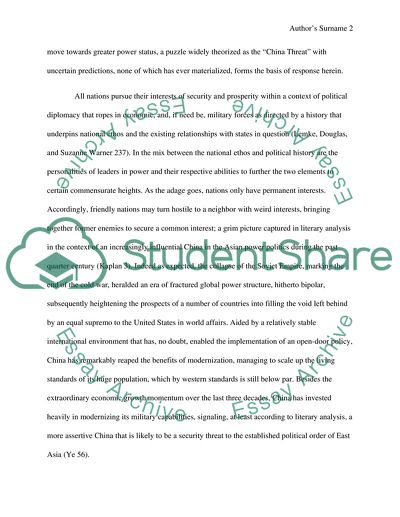Cite this document
(“Whether the rise of China is a threat to Asian stability Essay”, n.d.)
Whether the rise of China is a threat to Asian stability Essay. Retrieved from https://studentshare.org/history/1624604-whether-the-rise-of-china-is-a-threat-to-asian-stability
Whether the rise of China is a threat to Asian stability Essay. Retrieved from https://studentshare.org/history/1624604-whether-the-rise-of-china-is-a-threat-to-asian-stability
(Whether the Rise of China Is a Threat to Asian Stability Essay)
Whether the Rise of China Is a Threat to Asian Stability Essay. https://studentshare.org/history/1624604-whether-the-rise-of-china-is-a-threat-to-asian-stability.
Whether the Rise of China Is a Threat to Asian Stability Essay. https://studentshare.org/history/1624604-whether-the-rise-of-china-is-a-threat-to-asian-stability.
“Whether the Rise of China Is a Threat to Asian Stability Essay”, n.d. https://studentshare.org/history/1624604-whether-the-rise-of-china-is-a-threat-to-asian-stability.


